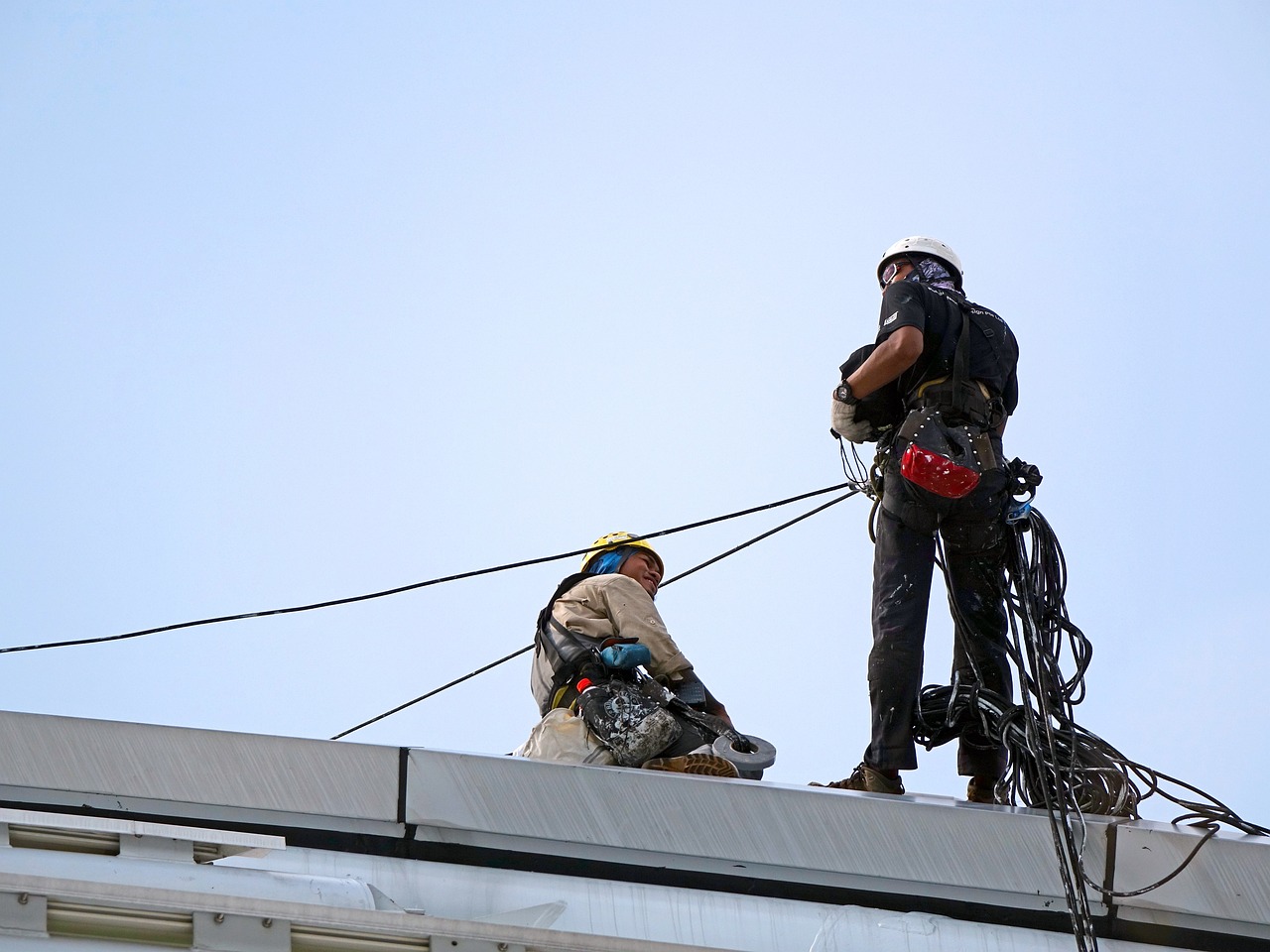Safety in the Light of Human Behavior: A Closer Examination
In today's fast-paced world, the concept of safety transcends mere regulations and protocols; it is deeply intertwined with human behavior. Understanding this intricate relationship is essential for creating effective safety measures across various sectors. Have you ever wondered why some people seem to take unnecessary risks while others are overly cautious? The answer lies in the complex interplay of psychological factors that influence our perception of safety and risk. This article delves into how these factors shape our behaviors, the effectiveness of safety programs, and the role of leadership in fostering a culture of safety.
Understanding how individuals perceive risk is crucial for implementing effective safety measures. Our perception of danger is often clouded by cognitive biases and emotional responses. For instance, people tend to overestimate the likelihood of dramatic events, like plane crashes, while underestimating more mundane risks, such as car accidents. This disparity can lead to a false sense of security and, ultimately, unsafe behaviors. By recognizing these biases, organizations can tailor their safety training to address these misconceptions, making safety practices more relatable and effective.
Behavioral safety programs aim to modify unsafe behaviors through observation and feedback. These initiatives focus on understanding the underlying reasons for unsafe actions and providing constructive feedback to encourage safer choices. But do these programs really work? Research shows that when implemented correctly, they can significantly improve workplace safety culture. By fostering an environment where employees feel comfortable discussing safety concerns, organizations can create a proactive approach to risk management.
The success of behavioral safety programs hinges on several key components:
- Training: Ongoing education is vital for instilling safety awareness and ensuring that employees understand the risks associated with their tasks.
- Reinforcement: Positive reinforcement encourages employees to adopt safe behaviors by recognizing and rewarding their efforts.
- Employee Involvement: Engaging employees in safety discussions fosters a sense of ownership and responsibility towards their own safety and that of their peers.
Effective training is vital for instilling safety awareness. It's not just about a one-time workshop; continuous education and skill development play a crucial role in promoting safe behaviors. Think of it like learning to ride a bike. The more you practice, the better you get at it. Similarly, regular training sessions can help employees internalize safety protocols and make them second nature.
Feedback mechanisms are crucial for reinforcing positive safety behaviors. Constructive feedback can lead to lasting changes in employee attitudes toward safety. Imagine if every time you completed a task safely, you received a thumbs-up from your supervisor. This kind of recognition not only boosts morale but also encourages others to prioritize safety. By fostering an environment where feedback is frequent and constructive, organizations can cultivate a culture of safety that resonates throughout the workforce.
Despite their benefits, behavioral safety programs face challenges in implementation. Common obstacles include resistance to change, lack of management support, and insufficient resources. Overcoming these challenges requires a strategic approach that includes clear communication, leadership buy-in, and adequate training resources. By addressing these barriers head-on, organizations can enhance the effectiveness of their safety initiatives and create a safer working environment.
Leadership plays a pivotal role in establishing and maintaining a safety culture. Leaders set the tone for safety practices within an organization, influencing employee behavior and commitment to safety. A leader who prioritizes safety not only demonstrates their commitment but also encourages employees to adopt similar values. But how can leaders effectively foster this culture?
Different leadership styles can significantly impact safety culture. For instance, transformational leaders inspire and motivate their teams to embrace safety as a core value, while transactional leaders may focus on compliance and rules. Each style has its merits, but a blend of both can create a robust safety culture that engages employees at all levels.
A supportive work environment fosters safe behaviors. Open communication, trust, and collaboration are essential elements that enhance safety culture within organizations. When employees feel safe to voice their concerns or report unsafe practices without fear of retribution, they are more likely to engage in safe behaviors. Think of it as a safety net; the more support you have, the less likely you are to fall.
Social norms shape our behaviors and perceptions of safety. Group dynamics and societal expectations significantly influence individual safety practices. Have you ever found yourself doing something risky because everyone else was doing it? This phenomenon is known as conformity, and it can lead to dangerous situations if not addressed.
Understanding normative influences can help identify why people engage in risky behaviors. Peer pressure and societal expectations often lead individuals to make unsafe choices. By recognizing these influences, organizations can develop strategies to counteract negative social norms and promote safer behaviors.
Promoting positive safety norms can lead to better outcomes. Strategies such as community engagement and peer support can help create a culture where safety is prioritized. When employees see their colleagues actively participating in safety initiatives, they are more likely to follow suit. It’s like a ripple effect—one small act of safety can inspire a wave of change.
The integration of technology in safety practices has transformed how we approach risk. From wearable devices to data analytics, technology plays a crucial role in enhancing safety behaviors and decision-making. But how exactly does technology make a difference?
Wearable technology can provide real-time data on safety conditions. Devices such as smart helmets or vests equipped with sensors can alert workers to potential hazards, enhancing awareness and improving safety compliance. Imagine having a personal safety assistant that keeps you informed and safe at all times!
Data analytics can identify trends and areas for improvement in safety practices. By leveraging data, organizations can make informed decisions about where to focus their safety efforts. This proactive approach not only enhances safety but also contributes to a more efficient workplace.
- What are the key factors influencing safety behavior? Human behavior is influenced by psychological factors, social norms, and leadership styles, all of which play a role in shaping safety practices.
- How can organizations implement effective behavioral safety programs? Successful programs require ongoing training, constructive feedback, and active employee involvement.
- What role does technology play in enhancing safety? Technology, such as wearable devices and data analytics, provides real-time insights and helps organizations make informed safety decisions.

The Psychology of Risk Perception
Understanding how individuals perceive risk is crucial for implementing effective safety measures. This perception is not just a straightforward evaluation of danger; it is a complex interplay of cognitive biases, emotional responses, and social influences. Have you ever wondered why some people fear flying despite its safety record while others feel perfectly at ease? This discrepancy often stems from our psychological makeup and how we interpret risks based on personal experiences and societal narratives.
Cognitive biases play a significant role in shaping our risk perception. For instance, the availability heuristic leads individuals to judge the likelihood of an event based on how easily examples come to mind. If a person frequently hears news stories about plane crashes, they may overestimate the danger of flying. Similarly, the optimism bias can cause individuals to believe they are less likely to experience negative events compared to others, leading to a false sense of security in unsafe situations.
Moreover, emotional factors greatly influence our perception of risk. Fear, anxiety, and past traumatic experiences can amplify our sense of danger. When we encounter a situation that triggers a strong emotional response, our brain often prioritizes this feeling over rational analysis. This emotional lens can distort our judgment, making us more prone to overreacting or underestimating risks. For example, someone who has experienced a workplace accident may develop a heightened sensitivity to safety protocols, while another who has never faced such an event might dismiss them as unnecessary.
Social influences also contribute to our understanding of risk. We often look to others when assessing danger, and the behaviors and attitudes of those around us can either reinforce or challenge our perceptions. In a workplace setting, if most employees neglect safety gear, an individual may feel less compelled to follow suit, believing that the collective behavior reflects a lower perceived risk. Conversely, if a culture of safety is promoted, where everyone prioritizes protective measures, individuals are more likely to adopt those behaviors, creating a positive feedback loop.
To illustrate how these factors intertwine, consider the following table that summarizes key psychological influences on risk perception:
| Influence | Description |
|---|---|
| Cognitive Biases | Distortions in thinking that affect decision-making and risk assessment. |
| Emotional Responses | Feelings such as fear or anxiety that can amplify perceived risks. |
| Social Norms | Behaviors and attitudes of peers that influence individual risk perception. |
Ultimately, understanding the psychology of risk perception is vital for developing effective safety strategies. By recognizing the biases and emotional factors at play, organizations can tailor their safety initiatives to address these psychological barriers. This means not only providing training and resources but also fostering an environment where open discussions about safety concerns can thrive. When individuals feel heard and understood, they are more likely to engage in safe practices, leading to a culture where safety is prioritized.

Behavioral Safety Programs
Behavioral safety programs are designed to create a safer work environment by focusing on the actions and behaviors of employees. These programs recognize that safety is not just about the physical environment but also about how individuals behave within that environment. By observing and modifying unsafe behaviors, organizations can significantly reduce incidents and enhance overall safety culture. But how do these programs actually work, and why are they so effective?
At the heart of behavioral safety programs is the principle that most accidents are caused by unsafe behaviors rather than unsafe conditions. This insight leads to a proactive approach where the emphasis is placed on identifying and correcting behaviors that could lead to accidents. Through systematic observation and feedback, employees are encouraged to adopt safer practices. This method not only addresses immediate safety concerns but also fosters a long-term commitment to safety across the organization.
One of the key elements that make these programs effective is the incorporation of real-time observation. Supervisors and peers observe each other’s behaviors in a non-threatening manner, providing immediate feedback. This feedback can be both positive and constructive, reinforcing safe behaviors while addressing unsafe ones. For instance, if an employee is seen wearing the proper safety gear, that behavior is acknowledged and praised, promoting a culture of safety. Conversely, if unsafe behavior is observed, it is addressed promptly, ensuring that the employee understands the risks involved.
Additionally, behavioral safety programs often include training sessions that equip employees with the knowledge and skills necessary to make safe choices. These training sessions can be interactive, allowing employees to engage in discussions about safety practices and share their own experiences. This not only enhances their understanding but also builds a sense of community and shared responsibility for safety within the workplace.
To illustrate the impact of behavioral safety programs, consider the following table that highlights the benefits observed in organizations that have implemented such initiatives:
| Benefit | Description |
|---|---|
| Reduced Incident Rates | Organizations often see a significant decrease in workplace accidents after implementing behavioral safety programs. |
| Enhanced Employee Engagement | Employees feel more involved in safety practices, leading to a stronger safety culture. |
| Improved Communication | Open lines of communication regarding safety concerns foster trust and collaboration among employees. |
| Long-term Safety Mindset | Employees develop a sustained focus on safety, making it a core value of the organization. |
However, implementing behavioral safety programs is not without its challenges. Organizations may face resistance from employees who are accustomed to traditional safety practices. To overcome this, it’s essential to involve employees in the development and implementation of the program from the start. By doing so, they feel a sense of ownership and are more likely to embrace the changes.
In conclusion, behavioral safety programs represent a powerful approach to enhancing workplace safety. By focusing on behaviors, providing constructive feedback, and fostering a culture of safety, organizations can create environments where employees feel empowered to prioritize safety. The journey towards a safer workplace is not always easy, but with commitment and the right strategies, it is certainly achievable.
- What are behavioral safety programs? These programs focus on modifying unsafe behaviors through observation and feedback to improve workplace safety.
- How do these programs work? They involve observing employee behaviors, providing feedback, and offering training to promote safe practices.
- What are the benefits of implementing such programs? Benefits include reduced incident rates, enhanced employee engagement, improved communication, and a long-term safety mindset.
- What challenges might organizations face? Resistance to change from employees and the need for ongoing commitment from leadership are common challenges.

Key Components of Behavioral Safety
Behavioral safety programs are essential in fostering a culture that prioritizes safety in the workplace. To effectively implement these programs, it is crucial to focus on several key components that contribute to their success. First and foremost, training plays a pivotal role. Without proper training, employees may not fully understand the safety protocols or recognize hazardous situations. Ongoing education ensures that safety practices are not just a one-time event but a continuous journey. Think of it like learning to ride a bike; the more you practice, the better you get at it, and the less likely you are to fall.
Another critical component is reinforcement. Positive reinforcement encourages safe behaviors by acknowledging and rewarding employees who follow safety protocols. This could be as simple as verbal praise or as structured as a rewards program. When employees see that their safe actions lead to recognition, they are more likely to repeat those behaviors. For example, consider a workplace where employees receive points for every month they work without incidents; these points could be exchanged for rewards. This not only boosts morale but also strengthens the safety culture.
Moreover, employee involvement cannot be overlooked. When employees actively participate in safety discussions and decision-making, they feel a sense of ownership over their safety and the safety of their colleagues. This involvement can take various forms, such as safety committees or feedback sessions where employees can voice their concerns and suggestions. Engaging employees in this way cultivates a community of safety where everyone looks out for one another, akin to a neighborhood watch, where each member plays a vital role in ensuring the safety of the community.
To illustrate these components further, let’s look at a table summarizing the and their significance:
| Component | Description | Significance |
|---|---|---|
| Training | Ongoing education on safety protocols and practices. | Enhances awareness and preparedness for potential hazards. |
| Reinforcement | Acknowledgment and rewards for safe behaviors. | Encourages repetition of safe practices and boosts morale. |
| Employee Involvement | Active participation in safety discussions and decision-making. | Fosters a sense of ownership and community in safety. |
In conclusion, the key components of behavioral safety—training, reinforcement, and employee involvement—are interlinked and essential for creating a robust safety culture. By focusing on these elements, organizations can transform their safety practices and ultimately lead to a safer workplace for everyone. Just as a well-tuned machine runs smoothly, a workplace that prioritizes these components will operate more efficiently and safely.
- What are behavioral safety programs?
Behavioral safety programs are initiatives designed to promote safe behaviors among employees through training, reinforcement, and active participation.
- Why is training important in behavioral safety?
Training is crucial because it equips employees with the knowledge and skills needed to recognize hazards and follow safety protocols effectively.
- How can reinforcement improve safety culture?
Reinforcement encourages employees to repeat safe behaviors by rewarding them, thereby enhancing overall safety culture.
- What role does employee involvement play?
Employee involvement fosters ownership and accountability, making individuals more likely to prioritize safety in their daily activities.

Training and Development
When it comes to fostering a culture of safety in the workplace, are not just important—they're absolutely essential. Imagine trying to navigate a dense forest without a map or compass; that’s what employees face without proper safety training. It’s not merely about following rules; it’s about understanding the *why* behind those rules. By equipping employees with the right knowledge and skills, organizations can significantly reduce the incidence of accidents and injuries.
Effective training programs should be comprehensive and ongoing. They should not only cover the basics but also delve into advanced safety practices that are specific to the industry. This includes understanding the risks associated with specific tasks and the proper use of safety equipment. For instance, in a manufacturing environment, employees should be trained on how to operate machinery safely, recognize hazards, and respond to emergencies. Regular refresher courses can help reinforce this knowledge and keep safety at the forefront of employees’ minds.
Moreover, the best training programs are interactive and engaging. They often incorporate various teaching methods, such as hands-on demonstrations, simulations, and group discussions. This approach not only makes learning more enjoyable but also ensures that the information is retained. A study showed that employees are more likely to remember safety protocols when they actively participate in the learning process rather than passively listening to a lecture.
One effective strategy is to utilize technology in training. For example, virtual reality (VR) training can immerse employees in realistic scenarios where they can practice their responses to potential hazards without any real-world risks. This method enhances learning retention and builds confidence in employees when they encounter similar situations in reality. According to recent findings, organizations that have adopted VR training experiences report a 30% increase in safety compliance among their staff.
Furthermore, organizations should foster a culture where employees feel empowered to take ownership of their safety training. This can be achieved by encouraging employees to participate in the development of training programs. When employees have a say in what they learn, they are more likely to be engaged and take the training seriously. This participative approach can include gathering feedback through surveys or focus groups, which can help tailor training to meet the specific needs of the workforce.
In addition, it’s crucial to recognize and reward safe behavior. Implementing a system where employees receive recognition for completing safety training or demonstrating safe practices can significantly enhance motivation. This could be in the form of certificates, public acknowledgment, or even small incentives. Such recognition not only boosts morale but also reinforces the importance of safety within the organization.
Ultimately, investing in training and development yields significant returns. A well-trained workforce is not only safer but also more productive and efficient. By prioritizing safety training, organizations can create an environment where employees feel valued and protected, leading to lower turnover rates and higher job satisfaction. Remember, a culture of safety begins with education, and when employees are educated about safety, they become the best advocates for their own well-being.
- What types of training are most effective for workplace safety?
Hands-on training, simulations, and interactive workshops tend to be the most effective, as they engage employees and enhance retention of safety protocols.
- How often should safety training be conducted?
Regular refresher courses should be held at least annually, with additional training sessions as needed based on job changes or new safety regulations.
- Can technology improve safety training?
Absolutely! Technologies like virtual reality and online training modules can provide immersive and flexible learning experiences that enhance understanding and retention.
- How can I encourage employee participation in safety training?
Involve employees in the training process by seeking their input on topics, providing opportunities for hands-on practice, and recognizing their achievements in safety.

Feedback Mechanisms
In the realm of workplace safety, feedback mechanisms serve as the backbone for fostering a culture of continuous improvement. Think of feedback as the compass that guides employees toward safer practices. Without it, individuals may drift into complacency, unaware of the potential hazards surrounding them. Constructive feedback is not just about pointing out mistakes; it’s about creating an environment where employees feel valued and motivated to enhance their safety behaviors. This approach can lead to a significant transformation in how safety is perceived and practiced within an organization.
When we talk about effective feedback mechanisms, we refer to several key elements that contribute to their success. First and foremost, feedback should be timely. Providing insights immediately after an observation allows employees to connect their actions with the feedback, making it more impactful. Imagine receiving a tip on your driving skills right after a lesson; it sticks better than if you wait until weeks later. Secondly, feedback should be specific. Vague comments like "do better" don’t help anyone. Instead, saying "try to wear your safety goggles during the welding process" offers clear guidance.
Moreover, the delivery of feedback is equally important. When feedback is given in a supportive and non-judgmental manner, employees are more likely to embrace it. This can transform the feedback process into a two-way street, where employees feel comfortable sharing their thoughts and experiences. Regular feedback sessions can also create a rhythm of communication that keeps safety at the forefront of daily operations. For instance, a weekly safety huddle can be an excellent platform for discussing observations, sharing success stories, and addressing areas for improvement.
To illustrate the impact of feedback mechanisms, consider the following table that outlines the differences between effective and ineffective feedback:
| Criteria | Effective Feedback | Ineffective Feedback |
|---|---|---|
| Timeliness | Given immediately after the observation | Delayed feedback, often forgotten |
| Specificity | Clear, actionable suggestions | Vague comments that lack direction |
| Delivery Style | Supportive and constructive | Critical or judgmental |
| Engagement | Encourages dialogue and discussion | One-sided communication |
Additionally, integrating technology into feedback mechanisms can further enhance their effectiveness. Digital platforms can facilitate real-time feedback, allowing employees to receive notifications about their safety practices instantly. This not only helps in maintaining accountability but also in tracking progress over time. Imagine a scenario where a worker receives a prompt on their mobile device reminding them to adhere to safety protocols, reinforcing the behavior before it becomes a habit.
In conclusion, feedback mechanisms are vital in shaping a safety-conscious workplace. By emphasizing timely, specific, and supportive feedback, organizations can cultivate a culture where safety is prioritized and continuously improved. When employees feel empowered through constructive feedback, they are more likely to take ownership of their safety practices, leading to a more secure work environment for everyone.
- What are the main benefits of feedback mechanisms in workplace safety? Feedback mechanisms help employees understand safety expectations, reinforce positive behaviors, and create a culture of continuous improvement.
- How can I implement effective feedback mechanisms in my organization? Focus on timely, specific, and supportive feedback, and consider using technology to facilitate real-time communication.
- What role does leadership play in feedback mechanisms? Leaders set the tone for feedback culture. By modeling constructive feedback practices, they encourage employees to engage and participate actively.

Challenges in Implementation
Implementing behavioral safety programs is not without its hurdles. Organizations often face a myriad of challenges that can impede the effectiveness of these initiatives. One of the primary obstacles is the resistance to change. Many employees are accustomed to their routines, and altering these deeply ingrained habits can be met with skepticism and reluctance. It's akin to trying to teach an old dog new tricks; the dog may simply prefer its comfortable, familiar ways over the uncertainty of new methods.
Another significant challenge is the inconsistent application of safety practices. Without a standardized approach, employees may receive mixed messages about safety protocols, leading to confusion and possible non-compliance. For instance, if one department strictly enforces safety measures while another does not, it creates a culture of inconsistency that can undermine the entire program. This inconsistency can be likened to a ship sailing in different directions; without a unified course, it risks capsizing.
Furthermore, insufficient training can derail even the best-laid plans. If employees do not fully understand the safety protocols or the reasons behind them, they are less likely to embrace the changes. Training should not be a one-off event but rather an ongoing process that evolves with the organization. Just as a gardener tends to plants regularly, organizations must nurture their employees’ safety knowledge continually.
Additionally, the lack of management support can significantly hinder the success of behavioral safety programs. When leadership fails to prioritize safety or engage with employees on this front, it sends a message that safety is not a core value. This can lead to a culture where employees feel that safety is merely a box to check rather than a genuine concern. Imagine trying to build a house without a solid foundation; without management backing, the safety culture crumbles.
To address these challenges, organizations can adopt several strategies:
- Engage Employees: Involve employees in the development and implementation of safety programs. Their insights can provide valuable perspectives and foster a sense of ownership.
- Consistent Communication: Maintain open lines of communication regarding safety protocols and updates. Regular meetings and feedback sessions can reinforce the importance of safety.
- Ongoing Training: Implement continuous training sessions that adapt to new challenges and technologies, ensuring that employees remain informed and engaged.
- Leadership Commitment: Leaders should actively participate in safety initiatives, demonstrating their commitment to creating a safe work environment.
By recognizing these challenges and proactively addressing them, organizations can create a more robust safety culture that not only protects employees but also enhances overall productivity. After all, a safe workplace is a productive workplace, and investing in safety is investing in the future of the organization.
- What are behavioral safety programs?
Behavioral safety programs focus on changing unsafe behaviors through observation, feedback, and training. They aim to create a culture of safety within organizations. - Why do employees resist behavioral safety programs?
Employees may resist due to fear of change, lack of understanding, or previous negative experiences with safety initiatives. Engaging them in the process can help alleviate these concerns. - How can management support safety initiatives?
Management can support safety initiatives by actively participating in training, communicating the importance of safety, and providing resources for continuous improvement. - What role does training play in behavioral safety?
Training is crucial for instilling safety awareness and ensuring that employees understand the protocols and the rationale behind them, leading to better compliance.

The Role of Leadership in Safety Culture
Leadership plays a pivotal role in establishing and maintaining a robust safety culture within any organization. Imagine a ship sailing through stormy seas; the captain's decisions and actions can mean the difference between safe passage and disaster. Similarly, leaders set the tone for safety practices, influencing how employees perceive and engage with safety protocols. When leaders prioritize safety, it sends a clear message that safety is not just a checkbox on a list but a core value of the organization.
One of the most effective ways leaders can foster a safety culture is through visible commitment. This means more than just talking about safety during meetings; it involves actively participating in safety initiatives, attending training sessions, and being present on the work floor. When employees see their leaders taking safety seriously, they are more likely to adopt similar attitudes. It’s like a ripple effect; one small action can create waves of change throughout the organization.
Moreover, leadership styles significantly impact safety culture. For instance, transformational leaders inspire and motivate employees to exceed their own expectations regarding safety. They create a vision for safety that aligns with the organization's goals and encourages employees to take ownership of their safety responsibilities. On the other hand, transactional leaders focus on compliance and adherence to rules, which can sometimes lead to a culture of fear rather than a culture of safety. Understanding these dynamics is crucial for leaders who wish to cultivate a positive safety environment.
Additionally, creating a supportive environment is essential for enhancing safety culture. Leaders should encourage open communication where employees feel comfortable voicing their concerns and suggestions. This can be achieved through regular safety meetings, anonymous feedback systems, or even casual check-ins. Trust is a significant component here; when employees trust their leaders, they are more likely to report unsafe conditions or behaviors without fear of reprimand.
Furthermore, collaboration among team members can lead to innovative safety solutions. Leaders should foster a sense of teamwork, promoting initiatives where employees can share their experiences and ideas about safety practices. This collaborative approach not only enhances safety but also builds camaraderie among employees, making the workplace more enjoyable and productive.
In conclusion, the role of leadership in shaping a safety culture cannot be overstated. Leaders must actively engage with their teams, model safe behaviors, and create an environment where safety is prioritized. By doing so, they not only protect their employees but also enhance the overall effectiveness of their organization.
- Why is leadership important in safety culture? Leadership is crucial as it sets the tone for safety practices and influences employee behavior towards safety protocols.
- How can leaders demonstrate commitment to safety? Leaders can show commitment by participating in safety initiatives, attending training sessions, and being present on the work floor.
- What leadership styles are most effective for promoting safety? Transformational leadership tends to inspire employees to take ownership of safety, while transactional leadership focuses on compliance.
- How can open communication improve safety culture? Open communication allows employees to voice concerns and suggestions, fostering trust and encouraging reporting of unsafe conditions.

Leadership Styles and Safety
When it comes to safety in the workplace, the style of leadership can make a world of difference. Think of it this way: a ship needs a strong captain to navigate through stormy seas, and similarly, a workplace requires effective leaders to guide employees through the often turbulent waters of safety practices. Different leadership styles — such as transformational and transactional — can significantly influence how employees engage with safety protocols. Transformational leaders inspire and motivate their teams to go beyond mere compliance, fostering a culture where safety is seen as a shared value rather than just a set of rules to follow.
On the other hand, transactional leaders focus on structured tasks and rewards. They might ensure that safety protocols are followed through a system of rewards and punishments. While this can lead to immediate compliance, it may not cultivate a genuine commitment to safety among employees. Instead, workers might adhere to safety measures just to avoid penalties rather than embracing them as essential to their well-being. This raises the question: which approach truly creates a safer work environment?
Research suggests that transformational leadership tends to yield better safety outcomes because it encourages open communication and fosters trust. When employees feel valued and understood, they are more likely to voice concerns and report unsafe conditions. A supportive atmosphere can lead to proactive safety behaviors, where individuals take the initiative to protect not just themselves but also their colleagues. In contrast, a transactional approach might suppress these important conversations, leaving safety issues unaddressed.
Moreover, leaders who practice a participative style, involving employees in safety decision-making, can enhance engagement and ownership of safety practices. This collaborative approach can be likened to a team sport, where every player has a role to play in achieving victory. When everyone feels responsible for safety, it creates a unified front against potential hazards. In a nutshell, the leadership style adopted can either build a fortress of safety or leave the door wide open for risks.
In conclusion, understanding the impact of leadership styles on safety is crucial for organizations aiming to improve their safety culture. By fostering transformational or participative leadership practices, companies can create an environment where safety is prioritized and ingrained into the daily routine of every employee. After all, a safe workplace is not just about following rules; it’s about creating a community that values and protects its members.
- What is the difference between transformational and transactional leadership? Transformational leadership focuses on inspiring and motivating employees, while transactional leadership is centered around structured tasks and rewards.
- How can leadership styles affect workplace safety? Leadership styles can influence employee engagement and commitment to safety protocols, impacting overall safety culture.
- What role does communication play in safety leadership? Open communication fosters trust and encourages employees to report unsafe conditions, leading to a proactive safety culture.
- Can a participative leadership style improve safety outcomes? Yes, involving employees in safety decision-making can enhance engagement and ownership of safety practices.

Creating a Supportive Environment
Creating a supportive environment is essential for fostering a culture of safety within any organization. When employees feel valued and supported, their commitment to safety practices naturally increases. Imagine walking into a workplace where open communication flows freely, where team members feel comfortable sharing their concerns without fear of judgment. This kind of atmosphere not only enhances safety but also boosts overall morale and productivity. How can organizations cultivate such an environment?
One of the first steps is to establish open lines of communication. This means encouraging employees to voice their opinions and concerns about safety without the fear of retaliation. Regular safety meetings can serve as a platform for discussion, allowing everyone to contribute their thoughts and suggestions. Furthermore, implementing anonymous feedback systems can empower employees to speak up about safety issues that they might otherwise keep to themselves. In this way, organizations can identify potential hazards before they escalate into serious problems.
Trust is another cornerstone of a supportive safety environment. When employees trust their leaders and colleagues, they are more likely to engage in safe practices and report unsafe conditions. Building trust requires consistent and transparent communication from leadership, as well as a demonstrated commitment to employee well-being. Leaders should actively listen to their team members' concerns and take appropriate action to address them. This not only shows that management values employee input but also reinforces the idea that safety is a collective responsibility.
Additionally, collaboration plays a critical role in enhancing safety culture. When teams work together towards a common goal of safety, they create a sense of unity and shared purpose. Encouraging team-building activities that focus on safety can help strengthen relationships among employees. For instance, organizing safety drills or workshops can provide opportunities for team members to collaborate, share knowledge, and learn from one another. This collaborative spirit can lead to innovative safety solutions that might not have emerged in a more isolated environment.
In conclusion, creating a supportive environment is not just about implementing safety protocols; it's about cultivating a culture where employees feel empowered, trusted, and connected. By fostering open communication, building trust, and encouraging collaboration, organizations can significantly enhance their safety culture. The result? A workplace where safety is not just a priority, but a shared value that everyone actively participates in.

The Impact of Social Norms on Safety Behavior
Social norms play a significant role in shaping our behaviors, especially when it comes to safety practices in various environments. These unwritten rules dictate what is considered acceptable or unacceptable behavior within a group, and they can either promote safe practices or lead to risky behaviors. Imagine walking into a workplace where everyone is wearing safety gear versus one where it’s seen as optional; the difference in adherence to safety protocols can be staggering. This phenomenon underscores the importance of understanding how social dynamics influence individual actions.
When we think about social norms, it's essential to recognize that they are not just about rules but also about the expectations that come from our peers. For example, if a worker observes colleagues ignoring safety protocols, they may feel pressured to do the same, believing that conformity is more valuable than compliance. This is known as peer pressure, and it can have a profound impact on safety behavior. In contrast, when positive safety norms are established—such as consistent use of protective equipment or adherence to safety procedures—individuals are more likely to follow suit, creating a culture of safety that benefits everyone.
To further illustrate the impact of social norms on safety behavior, consider the following table that outlines the differences between positive and negative safety norms:
| Type of Norm | Characteristics | Impact on Safety Behavior |
|---|---|---|
| Positive Norms | Encouragement of safe practices, open communication, peer support | Increased compliance with safety measures, reduced accidents |
| Negative Norms | Disregard for safety protocols, acceptance of risky behavior, lack of accountability | Higher likelihood of accidents, decreased morale |
Understanding the psychological mechanisms behind these norms is crucial for organizations aiming to improve safety outcomes. One primary factor is normative influence, which refers to the pressure individuals feel to conform to the behaviors of those around them. This can lead to a cycle where unsafe behaviors are perpetuated simply because they are deemed the norm within a group. Conversely, when organizations actively promote and model positive safety behaviors, they can shift these norms, encouraging everyone to prioritize safety.
To effectively promote positive safety norms, organizations can implement several strategies:
- Community Engagement: Involving employees in safety discussions and decision-making can foster a sense of ownership and responsibility.
- Peer Support Programs: Establishing buddy systems or mentorship programs can encourage safe practices through mutual accountability.
- Recognition and Rewards: Celebrating safe behaviors publicly reinforces the importance of adhering to safety norms and motivates others to follow suit.
In summary, the impact of social norms on safety behavior cannot be overstated. Organizations that recognize and address these norms can create a more positive safety culture, ultimately leading to fewer accidents and a healthier work environment. By fostering an atmosphere where safe practices are the norm, companies not only protect their employees but also enhance productivity and morale.
Q: How can organizations identify negative safety norms?
A: Organizations can conduct surveys, focus groups, and safety audits to gather insights on employee perceptions and behaviors related to safety.
Q: What role does leadership play in shaping safety norms?
A: Leadership is crucial in modeling desired behaviors and setting expectations. When leaders prioritize safety, it encourages employees to follow suit.
Q: Can social norms change over time?
A: Yes, social norms can evolve. By consistently promoting positive safety behaviors and holding individuals accountable, organizations can shift the culture over time.

Normative Influences on Decision-Making
When it comes to decision-making, the influence of social norms can be as powerful as a tidal wave, sweeping away individual judgment and leading us to conform to the behaviors of those around us. Imagine standing in a crowd where everyone is taking a certain action—whether it's wearing a hard hat on a construction site or following safety protocols during a fire drill. The pressure to conform can be overwhelming, often causing individuals to overlook their own assessments of risk in favor of what seems to be the collective choice.
So, what drives this behavior? At the heart of it lies the concept of normative influence, which is the social pressure we feel to behave in ways that are accepted or expected by our peers. This can lead to a phenomenon known as groupthink, where the desire for harmony or conformity in a group results in irrational or dysfunctional decision-making outcomes. For instance, in a workplace setting, if everyone else seems to disregard a safety protocol, an employee might also choose to ignore it, believing that their peers know better or that they won’t face repercussions.
Furthermore, the impact of normative influences can be segmented into two main categories: descriptive norms and injunctive norms. Descriptive norms refer to perceptions of what most people do in a given situation, while injunctive norms pertain to perceptions of what behaviors are approved or disapproved by society. Understanding these distinctions can help organizations tailor their safety programs effectively. For example:
| Type of Norm | Description | Example |
|---|---|---|
| Descriptive Norms | What most people do in a situation | Most workers wear safety goggles |
| Injunctive Norms | What is approved or disapproved | Wearing protective gear is mandatory |
Organizations can leverage these insights to promote safer behaviors. For instance, if a company highlights that "most employees wear their safety gear," it sets a descriptive norm that encourages others to follow suit. On the other hand, if they emphasize that "not wearing safety gear is against company policy," it reinforces the injunctive norm, making it clear that safe practices are not just encouraged but expected.
However, it’s important to recognize that normative influences can sometimes lead to negative outcomes. When individuals prioritize group norms over their own safety judgments, they may engage in risky behaviors. This is why fostering a culture where open communication is encouraged is essential. When employees feel safe to express their concerns without fear of judgment or ridicule, they are more likely to challenge unsafe practices and promote a culture of safety.
Ultimately, understanding the normative influences on decision-making is crucial for enhancing safety behaviors in any organization. By addressing these social dynamics, companies can create an environment where safe choices are not only the expected norm but also the most rational and beneficial path to take.
- What are normative influences? Normative influences are social pressures that encourage individuals to conform to the behaviors and attitudes of their peers.
- How can organizations counteract negative normative influences? Organizations can promote a culture of safety by encouraging open communication, reinforcing positive safety norms, and providing ongoing training.
- Why is understanding social norms important for safety? Understanding social norms helps organizations tailor safety programs that resonate with employees and foster a culture of safety.

Promoting Positive Safety Norms
In today's fast-paced work environment, promoting positive safety norms is essential for fostering a culture of safety that protects both employees and organizations. But how do we go about it? It all begins with understanding that safety isn't just a set of rules; it's a mindset. When we cultivate an atmosphere where safety is prioritized, we empower individuals to take ownership of their actions and make safer choices. This can be likened to planting a seed—nurturing it with care and attention until it blossoms into a strong, resilient tree.
One effective way to promote these norms is through community engagement. When employees feel connected to their peers, they are more likely to adopt safe behaviors. For instance, organizing safety workshops can provide a platform for sharing experiences and discussing safety concerns. These workshops can include interactive activities that encourage participation, making safety a collective responsibility rather than a solitary task. When individuals see their colleagues actively engaging in safety practices, it creates a ripple effect, inspiring others to follow suit.
Moreover, peer support plays a crucial role in reinforcing positive safety norms. Having a buddy system can be incredibly beneficial. When employees look out for one another, they create a safety net that not only enhances compliance but also builds trust within teams. This camaraderie can be further strengthened through regular team-building activities focused on safety. For example:
- Safety drills that emphasize teamwork and communication.
- Group discussions about safety challenges and solutions.
- Recognition programs for teams that demonstrate outstanding safety practices.
Additionally, leveraging technology can significantly boost the promotion of safety norms. For instance, using mobile apps that allow employees to report unsafe conditions or behaviors anonymously can encourage more individuals to speak up without fear of retribution. This transparency fosters a culture where safety is continuously improved upon, as feedback is actively sought and valued.
Ultimately, the key to promoting positive safety norms lies in creating an environment where safety is woven into the very fabric of the organization. This includes establishing clear communication channels, providing ongoing training, and celebrating safety milestones. By recognizing and rewarding safe behaviors, organizations can create a positive feedback loop that not only enhances safety but also boosts morale and productivity.
In conclusion, promoting positive safety norms is not just about compliance; it's about cultivating a shared commitment to safety that resonates throughout the organization. When everyone plays a part, the workplace transforms into a safer, more supportive environment for all.
Q: What are positive safety norms?
A: Positive safety norms are shared beliefs and behaviors within an organization that prioritize safety and encourage employees to act responsibly regarding their own safety and that of their colleagues.
Q: How can I encourage my team to adopt positive safety norms?
A: You can encourage your team by fostering open communication, organizing safety training sessions, and recognizing individuals or teams who exemplify safe behavior.
Q: Why is peer support important in promoting safety?
A: Peer support creates a sense of accountability and trust among team members, making it more likely for individuals to engage in safe practices and report unsafe conditions.
Q: Can technology really enhance safety behaviors?
A: Yes, technology such as safety apps, wearable devices, and data analytics can provide real-time feedback and insights that help organizations improve their safety practices.

Technology and Safety Behavior
In today's fast-paced world, technology has become an integral part of our lives, influencing almost every aspect of our daily routines. When it comes to safety behavior, technology is not just a tool; it’s a game changer. Imagine a construction site where workers are equipped with wearable safety devices that monitor their vital signs and environmental conditions. These devices act as a safety net, providing real-time alerts about potential hazards. It's like having a guardian angel watching over you, ensuring that you can focus on your tasks without constantly worrying about your safety.
The integration of technology into safety practices has transformed traditional approaches to risk management. For instance, data analytics plays a crucial role in identifying trends and potential hazards. By analyzing data collected from various sources, organizations can pinpoint areas that require immediate attention. This proactive approach not only enhances safety protocols but also promotes a culture of continuous improvement. Think of it as having a crystal ball that reveals patterns and insights, enabling companies to make informed decisions before accidents occur.
Moreover, the advent of mobile applications has made safety information more accessible than ever before. Workers can now report unsafe conditions or near misses with just a few taps on their smartphones. This immediacy fosters a sense of responsibility among employees, encouraging them to take ownership of their safety and that of their colleagues. In essence, technology is empowering individuals to become active participants in their safety culture, rather than passive observers.
Furthermore, let's not overlook the role of virtual reality (VR) in safety training. VR simulations provide immersive experiences that allow employees to practice safety protocols in a risk-free environment. Imagine training for emergency situations without the fear of real-life consequences. This innovative approach not only enhances learning but also boosts retention rates. Employees are more likely to remember the safety procedures when they've experienced them in a realistic setting.
As we delve deeper into the impact of technology on safety behavior, it's essential to consider the ethical implications. While technology offers numerous benefits, it also raises questions about privacy and data security. Organizations must navigate these challenges carefully to ensure that the advantages of technology do not come at the expense of employee trust. Striking the right balance between leveraging technology for safety and respecting individual privacy is crucial for fostering a positive safety culture.
In conclusion, the integration of technology in safety behavior is not just a trend; it's a necessity in today's world. From wearable devices to data analytics and VR training, technology is reshaping how we approach safety. As we embrace these advancements, it's vital to remain vigilant about the ethical considerations that accompany them. After all, a safer workplace is not just about the tools we use but also about the culture we create around safety.
- How do wearable safety devices enhance workplace safety? Wearable devices monitor workers' health and environmental conditions, providing real-time alerts to potential hazards.
- What role does data analytics play in improving safety practices? Data analytics helps identify trends and areas for improvement, allowing organizations to implement proactive safety measures.
- Can virtual reality training really improve safety awareness? Yes, VR training provides immersive experiences that enhance learning and retention of safety protocols.
- What ethical considerations should organizations keep in mind when using technology for safety? Organizations must balance the benefits of technology with privacy concerns to maintain employee trust.

Wearable Safety Devices
In today's fast-paced world, have emerged as game-changers in enhancing workplace safety. Imagine a scenario where every worker is equipped with a device that not only monitors their health but also alerts them to potential hazards in real-time. This is no longer a futuristic dream; it's a reality that industries are embracing to protect their most valuable asset: their employees.
These devices, often worn on the wrist or as part of clothing, utilize advanced sensors to track various health metrics such as heart rate, body temperature, and even exposure to harmful substances. For instance, a construction worker wearing a smart helmet equipped with sensors can receive immediate alerts if they are entering a hazardous zone or if their vital signs indicate distress. This proactive approach to safety not only prevents accidents but also fosters a culture of safety awareness among employees.
Here are some key benefits of integrating wearable safety devices into workplace safety protocols:
- Real-Time Monitoring: Wearable devices can continuously monitor a worker's health and environmental conditions, ensuring immediate action can be taken if something goes wrong.
- Increased Awareness: By providing instant feedback, these devices help employees stay vigilant about their surroundings and personal safety.
- Data-Driven Insights: The data collected from these devices can be analyzed to identify trends and potential safety issues, allowing organizations to implement changes before accidents occur.
Moreover, the integration of technology in safety practices is not just about preventing accidents; it’s also about enhancing overall productivity. For example, a study conducted by the National Safety Council found that companies implementing wearable safety technology saw a 30% reduction in workplace injuries within the first year. This statistic underscores the importance of investing in technology that not only protects workers but also improves operational efficiency.
However, while the benefits are clear, the implementation of wearable safety devices comes with its own set of challenges. Organizations must ensure that the devices are comfortable, easy to use, and do not interfere with the workers’ daily tasks. Additionally, there is a need for proper training to ensure employees understand how to use these devices effectively. Without proper integration and training, the potential of these devices can be significantly diminished.
In conclusion, wearable safety devices represent a pivotal advancement in workplace safety. By leveraging technology to monitor health and environmental conditions, organizations can create a safer work environment that empowers employees and minimizes risks. As we continue to innovate and improve these technologies, the future of workplace safety looks brighter than ever.
- What are wearable safety devices?
Wearable safety devices are technology-enabled gadgets worn by employees to monitor their health and safety conditions in real-time. - How do these devices enhance workplace safety?
They provide real-time alerts, monitor vital signs, and collect data to identify potential hazards, thus preventing accidents. - Are wearable safety devices comfortable to use?
Yes, most wearable devices are designed to be lightweight and comfortable, ensuring they do not hinder daily activities. - What industries can benefit from wearable safety devices?
Industries such as construction, manufacturing, and healthcare can significantly benefit from the integration of these devices.

Data Analytics for Safety Improvement
In today's fast-paced world, where every second counts, the integration of data analytics into safety practices has revolutionized how organizations approach risk management. Imagine having a crystal ball that not only predicts potential hazards but also provides actionable insights to mitigate them. This is precisely what data analytics offers. By analyzing vast amounts of data collected from various sources, organizations can identify trends, patterns, and anomalies that might otherwise go unnoticed. This proactive approach to safety is akin to having a seasoned detective on your team, always on the lookout for clues that could prevent accidents before they happen.
The significance of data analytics in safety improvement cannot be overstated. For instance, organizations can track incidents, near misses, and safety audits to create a comprehensive overview of their safety landscape. By employing advanced analytical tools, they can pinpoint the root causes of unsafe behaviors and environmental factors that contribute to accidents. This enables organizations to implement targeted interventions, rather than relying on generic safety measures that may not address the specific issues at hand.
To illustrate the impact of data analytics, consider the following table that summarizes key benefits:
| Benefit | Description |
|---|---|
| Identifying Trends | Data analytics helps organizations recognize patterns in safety incidents over time, enabling them to address recurring issues effectively. |
| Predictive Analysis | By analyzing past data, organizations can forecast potential safety risks and take preventive measures before incidents occur. |
| Resource Allocation | Data-driven insights allow for more efficient allocation of resources, ensuring that safety measures are implemented where they are needed most. |
| Enhanced Compliance | Organizations can monitor compliance with safety protocols in real-time, making it easier to enforce safety standards. |
Furthermore, the use of real-time data from wearable safety devices can significantly enhance safety compliance. Imagine workers equipped with smart helmets or vests that monitor their surroundings and alert them to potential hazards. This real-time feedback loop not only empowers employees to make safer choices but also provides management with invaluable data to refine safety protocols continuously.
However, it's essential to remember that data analytics is not a panacea. It requires a cultural shift within organizations to embrace a data-driven mindset. Employees must be trained to understand and utilize data effectively, and leadership must foster an environment where insights are shared and acted upon. This collaborative approach ensures that data analytics becomes an integral part of the safety culture, rather than just a set of numbers on a report.
In conclusion, harnessing the power of data analytics for safety improvement is not just about technology; it's about transforming the way we think about safety. By leveraging data, organizations can create a safer work environment that not only protects employees but also promotes a culture of continuous improvement. As we move forward, the emphasis on data-driven decision-making will only grow stronger, paving the way for a future where safety is not just a priority, but a fundamental value embedded in every aspect of organizational operations.
- What is data analytics in safety management?
Data analytics in safety management involves analyzing data related to safety incidents, compliance, and employee behaviors to identify trends and improve safety practices. - How can data analytics predict safety risks?
By examining historical safety data, organizations can identify patterns and predict potential risks, allowing them to implement preventive measures proactively. - What role do wearable devices play in safety analytics?
Wearable devices provide real-time data on environmental conditions and employee behaviors, enhancing awareness and compliance with safety protocols. - Is implementing data analytics costly?
While there may be initial costs associated with technology and training, the long-term benefits of improved safety and reduced incidents can outweigh these expenses.
Frequently Asked Questions
- What is the psychology of risk perception?
The psychology of risk perception refers to how individuals assess and react to potential dangers. It's influenced by cognitive biases, emotional responses, and personal experiences. Understanding this can help organizations implement better safety measures tailored to how people think and feel about risks.
- How do behavioral safety programs work?
Behavioral safety programs focus on changing unsafe behaviors through observation and feedback. By encouraging employees to engage in safe practices and providing constructive feedback, these programs can enhance workplace safety culture and reduce incidents.
- What are the key components of effective behavioral safety?
Successful behavioral safety programs typically include training, reinforcement, and employee involvement. Training ensures that workers are aware of safety practices, while reinforcement encourages positive behaviors. Involvement fosters a sense of ownership and commitment to safety within the organization.
- Why is leadership important in safety culture?
Leadership plays a crucial role in shaping and maintaining a safety culture. Leaders set the tone for safety practices by modeling behaviors, communicating openly about safety issues, and showing commitment to safety initiatives. Their influence can significantly impact employee engagement and adherence to safety protocols.
- How do social norms affect safety behavior?
Social norms greatly influence individual behavior, including safety practices. People often look to their peers for cues on how to act, which can lead to conformity or peer pressure. Understanding these dynamics can help organizations promote positive safety norms and encourage safer behaviors.
- What role does technology play in enhancing safety?
Technology has transformed safety practices by providing tools for real-time monitoring and data analysis. Wearable safety devices can alert workers to hazards, while data analytics can identify trends and areas needing improvement. Leveraging technology helps organizations make informed decisions about safety strategies.


















